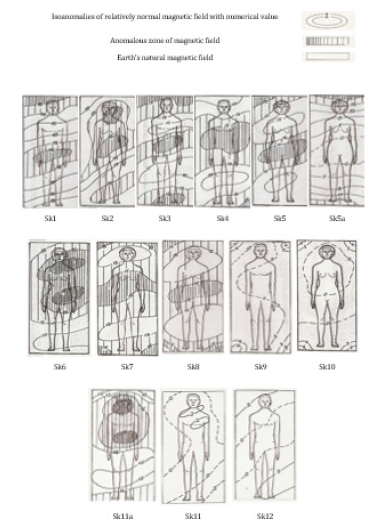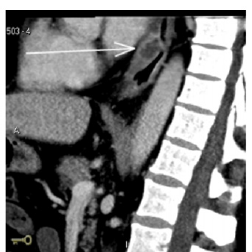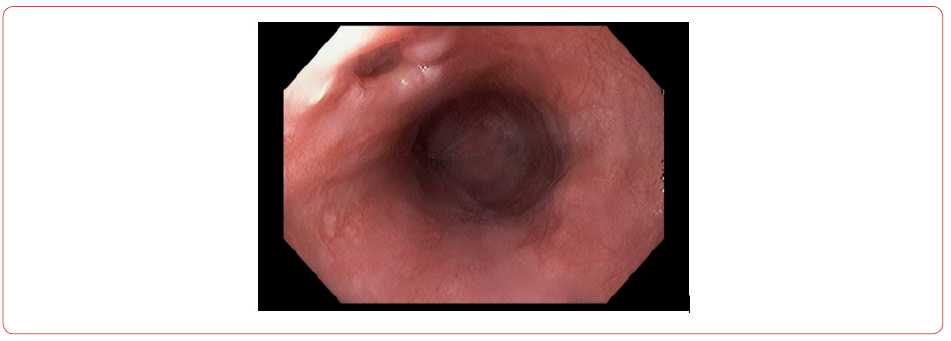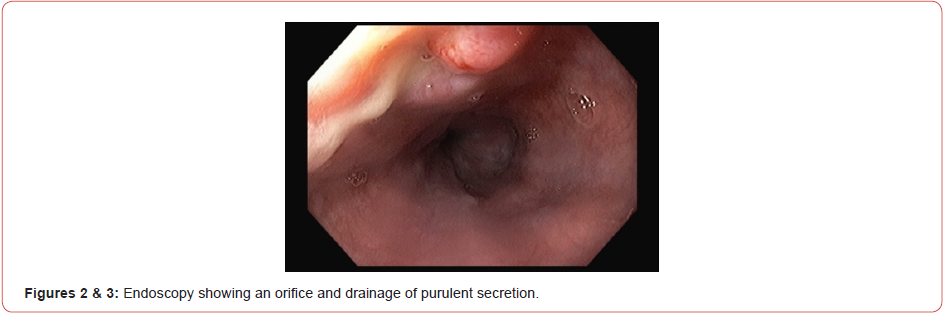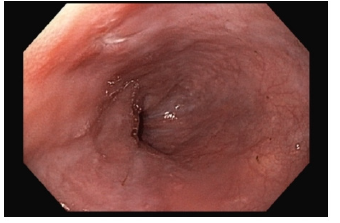Authored by Siniša Franjić*,
Abstract
Spinal anesthesia is a method of neuroaxial anesthesia in which a local anesthetic is applied to the subarachnoid space of the spinal cord leading to blocking the conduction of painful stimuli in the area innervated by anesthetized nerves. This form of anesthesia is particularly suitable for surgeries performed below the level of the navel. When performing this form of anesthesia, the local anesthetic is applied to the space between the two vertebrae with a thin needle. During this procedure, the patient sits or lies on his side, and the speed of drug administration depends on the patient’s cooperation and the anatomy of the spine. Spinal anesthesia typically acts for about 2-3 hours, after which the patient begins to regain sensation in the anesthetized area.
Keywords:Spinal Anesthesia; Spinal Cord; Patient; Health Care
Introduction
Spinal anaesthesia (Subarachnoid/intrathecal anaesthesia) likely first done via way of means of Corning in 1885, however first done for surgical procedure via way of means of Bier in 1898. Initial use of cocaine changed into related to tremor, headache and muscle spasms [1]. The much less poisonous procaine changed into first utilized by Braun in 1905 and changed into quickly used widely. Hyperbaric answers had been brought via way of means of Barker in 1907. Further refinements had been associated with new nearby anaesthetic agents. Continuous spinal strategies had been defined withinside the 1940s, to begin with thru rubber tubing related to the needle left in situ.
Popularity waned withinside the overdue 1940s following reviews of neurological harm and the creation of neuromuscular blockading capsules for general anaesthesia (GA). In the conventional Woolley and Roe case withinside the UK in 1947, instances of paraplegia throughout the equal running listing observed spinal anaesthesia. Phenol infection thru cracks withinside the cinchocaine ampoules changed into blamed on the time, even though infection of the syringes and needles with acidic descaler answer from the steriliser has on account that been recommended as being greater possibly.
Erector spinae plane (ESP) block is an interfascial plane block which has grown in reputation as an powerful and secure analgesic nearby method [2]. It has extensive style of packages starting from manipulate of acute postoperative ache to persistent ache. Anatomical and radiological research in sparkling cadavers shows that its possibly webweb page of movement is on the dorsal and ventral rami of the thoracic spinal nerves. This block is generally done beneathneath ultrasound guidance, and includes figuring out the transverse system of a decrease thoracic vertebrae. The probe is located in a vertical alignment and the erector spinae muscle groups are visualised, mendacity below the trapezius muscle. A needle is located beneathneath ultrasound visualisation, below the fascia of the erector spinae muscle. Local anaesthetic answer may be given both as a bolus or with an indwelling cathether method. A latest overview observed that it’s miles typically used as a part of multimodal analgesia, and that round a third of research confirmed a discount in opioid requirements. There is presently little proof in hepatic resection surgical procedure, however it could be beneficial as a part of a multimodal method.
Spinal Cord
As a fetus, the spinal cord spans the whole duration of the spine [3]. As the little one ages, the spine lengthens at a quicker charge as compared to the boom of the spinal cord. As a result, the spinal cord ends on the L3 stage in early childhood, and in maturity the spinal cord extends from the foramen magnum to the L1-2 level.
As the spinal cord procedures L1 it tapers off into the conus medularis and in the end turns into the cauda equina, or “horse’s tail,” a package of nerve roots that glide highly freely withinside the cerebrospinal fluid (CSF) of the spinal canal. A spinal anesthetic done underneath L1 might be withinside the territory of the cauda equina and reduce the capacity for spinal cord trauma because the needle theoretically displaces the nerve roots to the side.
There are 31 pairs of spinal nerves (8 cervical, 12 thoracic, 5 lumbar, and 5 sacral). The nerve roots go out the spinal column via bilateral intervertebral foramen. In the cervical spine the nerve roots go out above their corresponding vertebral frame. At the C7 frame, the C7 root exits above and the C8 root exits underneath (among C7 and T1). Starting at T1, the nerve roots then go out underneath their respective vertebral bodies.
Anesthesiologists are reluctant to apply spinal anesthesia in persistent spinal harm sufferers, even though there may be no proof suggesting worsening of neurological final results with spinal anesthesia [4]. Spinal anesthesia may be given for decrease belly and decrease limb surgical procedure. Avoidance of complications of popular anesthesia and dependable suppression of the autonomic hyperreflexia are the blessings of spinal anesthesia. However, the hazards are that standard dose/reaction relation might not be visible in those sufferers and it’s miles nearly not possible to decide the extent of block, if the extent of spinal anesthesia has now no longer unfold above the extent of spinal harm. Spastic paresis turning into flaccid might also additionally assist in figuring out the extent of block in few sufferers. Spinal anesthesia is related to exaggerated hypotension because of low sympathetic tone in sufferers with spinal twine harm. Hence, good enough preloading with fluids is suggested earlier than giving spinal anesthesia. Epidural anesthesia is much less excellent than spinal anesthesia because of distortion of the epidural area and possibilities of ignored segments. Epidural pethidine and fentanyl were used to govern autonomic hyperreflexia.
CSE
An epidural catheter gives extended anesthesia and an choice to use for postoperative analgesia [3]. A single-shot spinal is constrained to the period of movement of the injected drug (60–90 minutes). The combined spinal–epidural (CSE) method is the overall performance of a unmarried shot spinal block and the location of an epidural catheter withinside the equal setting. A CSE combines the gain of a unmarried shot spinal (rapidity and predictability of block) with epidural anesthesia and analgesia (alter and amplify the block as needed).
Epidural extent extension: a low subarachnoid block can amplify cephalad via way of means of an epidural ‘top-up’ of 10 ml of everyday saline given inside 5 minutes of the spinal block. Compression of the subarachnoid area via way of means of the saline withinside the epidural area probably effects in cephalad unfold of nearby anesthetic in the subarachnoid area. In morbidly overweight sufferers, the desired anesthesia method for a cesarean phase is a CSE on account that duration of surgical procedure is unpredictable and popular anesthesia is related to elevated complication hazard. Disadvantages consist of highly longer period of anesthetic method and not on time confirmation of practical epidural catheter.
Injection
The biggest determinants of anesthetic unfold consist of affected person role throughout and right away after injection and the dosage and baricity of the nearby anesthetic injected [5]. A large injected overall dose (now no longer extent or awareness on my own) of nearby anesthetic will bring about in addition unfold in both route. The baricity of a nearby anesthetic essentially refers back to the relative density of the drug in terms of that of CSF (cerebrospinal fluid). A hyperbaric drug is denser, and accordingly heavier, than CSF and could migrate in a route steady with gravity (ie, it’ll sink with gravity). A hypobaric answer is lighter than CSF and could unfold in a route contrary to gravity (upward thrust towards gravity). An isobaric anesthetic has the equal density as CSF and could possibly continue to be wherein it’s miles injected. For example, if a affected person is injected with an answer whilst seated in an upright role, a hyperbaric answer will unfold caudally, a hypobaric answer will unfold cephalad, and an isobaric answer will continue to be on the site of injection. Dextrose is commonly delivered to a method to make it hyperbaric; whereas, fentanyl or sterile water delivered to an answer will make it hypobaric.
Patient positioning after injection will even decide unfold. If a affected person is located in Trendelenburg position, the anesthetic will tour cephalad, and if the affected person is in reverse-Trendelenburg, the answer will tour caudally. This isn’t always proper for isobaric answers, however, as gravity does now no longer play a function in those instances.
Patient
When a hyperbaric answer is used for a thoracic neuraxial in a affected person withinside the supine role, the injected drug will migrate to the maximum based area of the spine [5]. The herbal curvature of the backbone dictates that the maximum posterior and based curvature of the thoracic spine takes place on the T4-T8 stage, consequently generating an anesthetic stage closer to T4.
The unfold and distribution of any spinal anesthetic is likewise extraordinarily depending on the extent of CSF withinside the spinal column. In popular, elevated CSF extent is related to reduced unfold of nearby anesthesia, and reduced extent effects in elevated unfold. Patient elements affecting CSF extent consist of affected person top (taller sufferers require greater nearby anesthetic), intra-belly strain together with being pregnant or big intra-belly tumors, and man or woman anatomic versions of the spinal column. In the case of being pregnant, the idea is that the elevated intra-belly strain ends in engorgement of epidural veins, thereby lowering CSF extent. Thus, parturients might require much less anesthetic method to reap the equal unfold.
Age additionally can be an unbiased determinant in that the aged have reduced CSF extent, in all likelihood because of extreme kyphosis, and require smaller doses of nearby anesthetic. The top of the injection webweb page and the route of injection via the needle also are elements that can have an effect on the extent of anesthesia obtained.
Caesarean Section
In skilled hands, spinal anaesthesia may be nearly as speedy as popular anaesthesia, and there are few events whilst the urgency of the state of affairs method that there may be no time for this method [6]. If the mother already has an powerful epidural in situ then, time permitting, this must be crowned up in desire to organising a brand new block. If time is short, a single-shot spinal has been recommended as an opportunity to popular anaesthesia in a mother with an epidural in situ. If spinal supplementation of an present epidural block is idea appropriate, it could be important to apply a discounted dose if an epidural top-up has currently been given, as there were case reviews of very excessive blocks in those circumstances.
Spinal anaesthesia is contraindicated in sufferers with hypovolaemia, coagulation disorders (whether or not iatrogenic or pathological) and systemic sepsis. Although nearby anaesthesia changed into historically prevented formerly if big blood loss changed into expected, consisting of in placenta praevia, many anaesthetists might now use a spinal block on this state of affairs. There is a few proof to signify that blood loss and the want for blood transfusion is decreased if nearby anaesthesia is utilized in those circumstances.
Although historically favoured as being higher for the toddler than popular anaesthesia, there may be proof that spinal anaesthesia can be related to more neonatal acidosis than after epidural or popular anaesthesia, in all likelihood associated with the rapidity of onset and cardiovascular changes. However, the fast onset and greater profound block as compared with epidural anaesthesia, and the more maternal protection profile as compared with popular anaesthesia, make spinal anaesthesia the method desired via way of means of maximum obstetric anaesthetists for CS (caesarean phase).
Standard tracking is mandatory, and appropriate intravenous get admission to is essential. Most anaesthetists choose to carry out spinal anaesthesia with the affected person at the running table, on account that this minimises the want for motion after the nearby anaesthetic has been administered. Sitting and lateral positions are each acceptable, even though there may be proof that the previous can be simpler if the bony landmarks are hard to palpate. The block has a tendency to expand greater swiftly withinside the lateral role, likely thanks to the slope of the vertebral canal on this role in women (the hips are wider than the shoulders, inflicting a downward slope closer to the head, in contrast to in men, wherein the other has a tendency to occur).
In hard work and delivery, the ache of uterine contractions may be a stimulant for AD, which may be attenuated via way of means of management of spinal, or epidural anesthesia [7]. Further blood strain control may be completed with sodium nitroprusside or trinitroglycerin as needed. In maximum sufferers, affirmation of spinal anesthesia may be showed via way of means of the absence of a Babinski sign and the patellar tendon reflex and the lack of spasticity, even though figuring out the precise stage of block may be hard. Finally, extra care should be taken to save you ascending urinary tract infections and thromboembolic occasions in pregnant women with spinal cord injuries.
Technique
The anesthetic company must recall the form of fracture whilst getting ready for surgical procedure [8]. Intertrochanteric fractures are related to large blood losses and longer operations, due to the fact a plate and screw are inserted, than intracapsular fractures that can be repaired with cannulated screws or a hemiarthroplasty relying at the viability of the femoral head.
Advantages of nearby anesthesia, consisting of supplied via way of means of a spinal anesthetic, are that (1) it avoids endotracheal intubation and airway manipulation and the medications that want to be administered to perform this, (2) it decreases the full quantity of systemic remedy the affected person gets at some point of the process, and (3) it could play a function in lowering the hazard of thromboembolism. The vasodilatory impact of the spinal anesthetic might also additionally assist the affected person with CHF (congestive heart failure). However, intravascular fluid nevertheless must receive carefully due to the fact CHF might also additionally get worse because the intravascular vasodilatory impact of the spinal recedes.
Preoperatively, intravascular extent fame is a subject as fractures can bring about extensive blood loss, and a spinal anesthetic withinside the presence of hypovolemia can bring about profound hypotension. An extra subject is the quantity of time the affected person should lay at the fracture table, specially withinside the aged, as even small quantities of sedation can bring about extensive respiration depression.
Peripheral nerve blocks together with lumbar plexus, femoral, and lateral femoral cutaneous nerve (LFCN) blocks can also be utilized in decided on situations. Chayen and coworkers proven the effectiveness of lumbar plexus blocks in fractured hip sufferers. This block may be done with the nerve stimulator method or the usage of ultrasound guidance. Fracture restore requiring best cannulated pins can be done with blended femoral and LFCN blocks. The femoral nerve block gives analgesia withinside the area of the hip, and the LFCN block will anesthetize the area of cannulated pin insertion placed at the lateral issue of the thigh. An LFCN block is done via way of means of administering partial to nearby anesthetic in a cephalad route from a factor 1 cm medial and not as good as the anterior advanced iliac spine. The LFCN is a sensory nerve and consequently now no longer amenable to region with a nerve stimulator. Alternatively, the nerve may be blocked the use of ultrasound guidance.
Intraoperative concerns for sufferers present process fractured hip restore consist of right positioning and padding at the fracture table, retaining good enough intravascular extent fame as blood is lost, and correctly retaining frame temperature. Observation for hemodynamic alterations, and different unanticipated responses withinside the aged affected person, is specially essential because the process progresses.
4 Ms
All sufferers with malignancy must be assessed with the 4 Ms in mind: mass impact of the tumor specially on airlines and wonderful vessels; the facet outcomes of chemotherapeutic medications, together with respiration toxicity from bleomycin or cardiac or renal toxicity from different agents; metabolic outcomes associated with paraneoplastic disorders; and different organ disorder associated with metastatic disorder [9]. Finally, placement of neuraxial or nearby nerve block catheters calls for exclusion of pre-present coagulopathy and discontinuation of anticoagulant remedy according with the American Society of Regional Anesthesia recommendations. Anticoagulant medicinal drugs must consequently be reviewed and held for the right preoperative interval.
An essential a part of the preoperative assessment is the overview of the preoperative imaging, specially the computed chest tomography (CT) test. The preoperative CT gives precious facts that may be used to cautiously plan airway control and assume problems with endobronchial tube placement, oxygenation, or ventilation throughout one-lung ventilation (OLV). Anesthesiologists must discover ways to compare the snap shots themselves, because the radiologist’s document might not touch upon unique elements applicable to lung isolation. For example, if a left-sided resection or pneumonectomy is deliberate or the affected person affords with a left mainstem bronchus tumor, a left-sided double lumen tube might be contraindicated. The assessment of primary airway anatomy is likewise essential in sufferers offering for a next lung resection. For left-sided double lumen tube placement, the left mainstem bronchus diameter may be measured at the CT test and be used to manual the choice of double-tumen tube length. Radiologic lung pathology may be diagnosed on chest CT and might suggest the presence of bullous lung disorder or blebs, fibrotic changes, or interstitial patterns, together with pulmonary edema, atelectasis, consolidation, or pleural disorder together with effusions. The length and particular region of any lung mass, specially whilst centrally placed, might also additionally yield beneficial clues as to the surgical problem with resection and the probability of conversion from thoracoscopic to open procedures. Mass impact on wonderful vessels, together with the advanced vena cava, brachiocephalic veins, or pulmonary arteries, can regulate the plan for venous get admission to, consisting of placement of extra get admission to withinside the decrease extremities. Extrapulmonary pathologies, together with coronary artery calcification, extreme cardiac chamber enlargement, pulmonary artery enlargement, or pericardial effusion, may be visible. Finally, overview of the imaging will facilitate neuraxial catheter placement, each the intensity of laminae for paramedian epidural placement and the absence of spinal deformities.
The gain of the excessive spinal method is possibly associated with attenuation of the strain reaction to cardiac surgical procedure and the related cardiovascular balance with stepped forward cardiac indices and decrease pulmonary vascular resistance [10]. In addition, a few reviews have recommended that excessive spinal anesthesia led to much less beta-receptor disorder, decrease strain reaction, and changed anti inflammatory and immune structures whilst as compared to popular anesthesia on my own withinside the cardiac surgical setting. Careful affected person choice is crucial, and Trendelenburg positioning with extensive vasoactive assist is regularly required to hold good enough imply arterial strain. Commonly, hyperbaric nearby anesthetic answers are administered blended with opioids for stepped forward analgesic impact postoperatively, with maximum of the posted facts the use of a mixture of hyperbaric nearby anesthetic answer and intrathecal morphine (e.g. 20–40 mg of 0.75% hyperbaric bupivacaine with 0.3–0.4 mg morphine, and regularly sufentanil 10–20 mcg).
Conclusion
Spinal anesthesia occurs when drugs are given into a fluid that surrounds the spinal cord. Pain signals from the spinal nerves are blocked before they reach the brain so surgery can be performed painlessly and the patient is awake. Depending on the position of the body after the injection, the entire lower half of the body or only one side of the lower half of the body is blocked. After the anesthetic stops working, sensation and motor skills are restored. Two to four percent of patients develop headaches after spinal anesthesia.
To read more about this article...Open access Journal of Anaesthesia & Surgery
Please follow the URL to access more information about this article
https://irispublishers.com/asoaj/fulltext/in-shortly-about-spinal-anesthesia.ID.000568.php
To know more about our Journals...Iris Publishers
To know about Open Access Publishers


